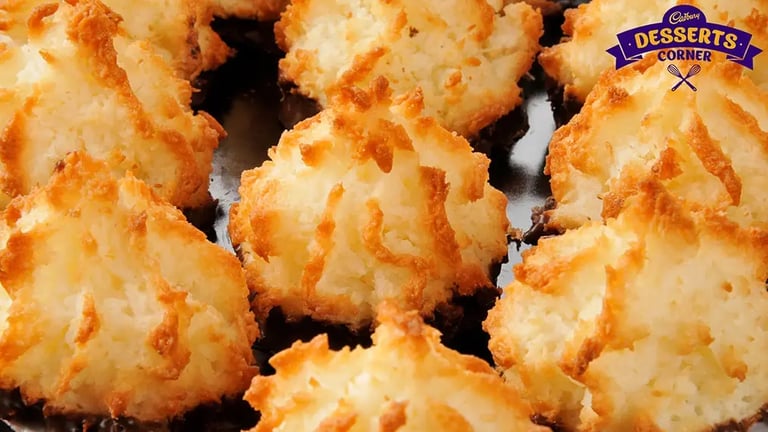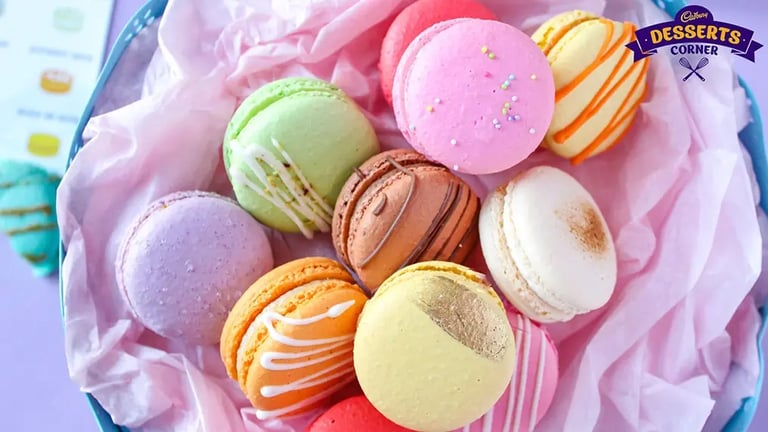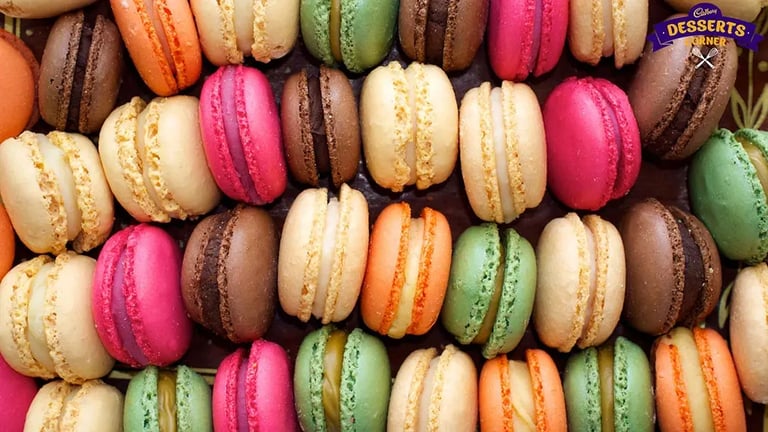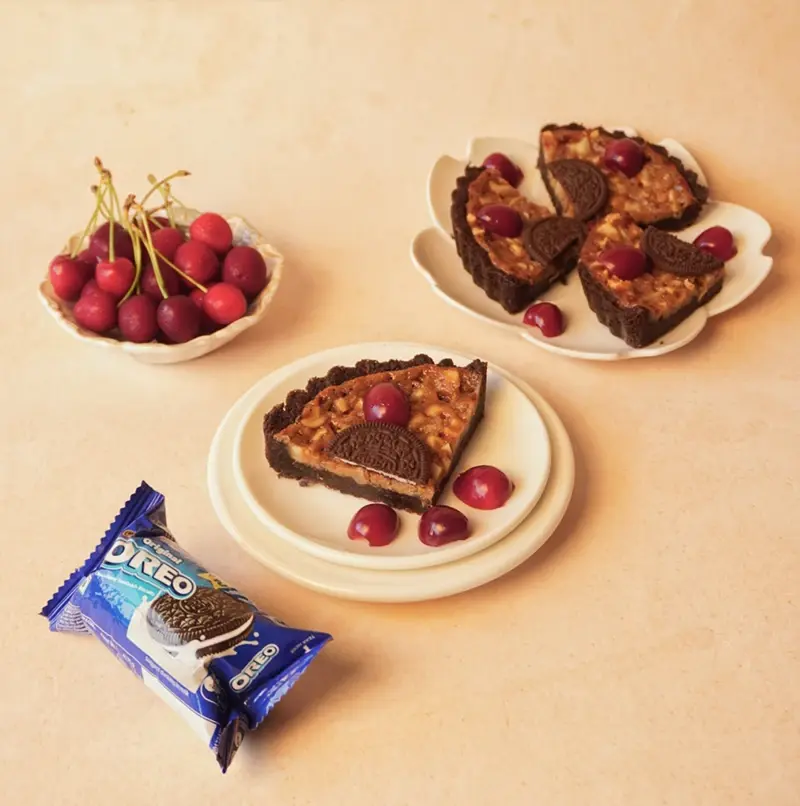- Home
- Articles
- Macarons vs Macaroons: The Confusing Fable of This Dessert and How its Two Modern Versions Came Into Being
To be exact, macarons and macaroons were twins who were separated at birth. One was raised in Paris with the full Parisian touch and the other was nurtured in humble ships and fed coconuts so it didn’t perish. To know the twin’s story from nobility to royalty, and then to rags, do read on.

To be exact, macarons and macaroons were twins who were separated at birth. One was raised in Paris with the full Parisian touch and the other was nurtured in humble ships and fed coconuts so it didn’t perish. To know the twin’s story from nobility to royalty, and then to rags, do read on.
Budding pastry chefs go to culinary schools to master macarons; they are not easy to make and need a seasoned hand to create. If you’ve read enough of Enid Blyton and can still vividly recall the immersive world of her creations, you might recall macaroons–the older step sister who gets a bad reputation in the books and is often mistaken as the French macaron.
You might be scratching your head and thinking that both are actually the same, one might actually have evolved from the other, but that is not the case. The technique used to make them is different even though both of them fall in the cookie category.
The Original Macaroons

Macaroons, surprisingly, do not originate from France but from its neighbor Italy! In contrast to the delicate French macaron, macaroons have a dense, chewy texture primarily due to the shredded coconut that gives the macaroons their distinct flavor.
The name macaroon was coined from the term ammaccare, which translates to “crush” and this scrumptious dessert dates back to 8th-century Italy. They were quite literally called the Priest’s belly button back then, apologies for that unappetizing image.
Besides the coconut macaroon, an Italian macaroon also exists, which is neither like the coconut ones, nor like the French macarons. The Italian macaroons are powdery and crispy and have a sweet taste. You could actually call them the mother of the modern-day macarons, for the recipe of the Italian macaroons was brought to France a few thousand years ago.
It is said that the original recipe (of the Italian macaroon) dates back to at least the 16th-century royal court of Katarina de Medici. Some believe that this noblewoman from Florence may have brought the recipe with her from Italy when she married the King of France. During that time, only almond flour, egg whites, and powdered sugar were used to make the cookies.
This macaroon was gatekept within the royal chambers and served only to the guests of the royals, and any nobility associated with them. It wasn’t until King Louis XIV’s visit to the Palace of Versailles that the macaroons met commonality, that is they were served to guests who were not royalty.
With the fall of King Louis XIV’s empire towards the end of the 18th century, and as the recipes became a piece of common knowledge, chefs started introducing different ingredients, among which one of them was substituting the almond with coconuts, and that’s how macaroons were born, the one with coconut in it.
A French company first added shredded coconut to the confection as a preservative for long shipments. Similarly, in the US, a baker experimented with coconuts from Cuba, shredding and mixing them into sweets like macaroons.
This shifted the classic recipe from almonds to coconut, creating the signature dense, chewy texture we now associate with coconut macaroons globally. More variations have popped up, with chocolate chips and dips enhancing its flavor. Now commonly viewed as a French confection despite its origins, coconut macaroons can be found in pastry shops worldwide.
Macaron

Continuing their journey from the fall of the royal family (read macaroons if you missed it) macarons is another version of the original Italian macaroons that was a well-kept secret of the Italians and only served to royalty.
Here is where it gets confusing: These colorful confections are often called French macaroons; yes, the same ones that do not feature coconuts and somewhat use the original ingredients from the Italian macaroons. Despite this mind-numbing confusion, it was the French who ultimately were responsible for popularizing the macarons we know today.
Macarons look cute, sophisticated, and something that typically features in gourmet picnics, and why not, when they are crafted to come in assorted colors, flavors, and fillings? The process of making macarons is a meticulous one, requiring more air, so one small error in the making process, and the macarons will just fall apart (just like some of us).
Macarons are known for their unique sandwich cookie structure and distinct flavor. The light, delicate texture comes from a mixture of primarily almond flour, powdered sugar, and egg whites. This creates a smooth batter that is piped into rounds and bakes up with a signature dome shape. Once baked, the cookies are soft, almost marshmallowy encased in a thin crunchy and crumbly coating.
Pairing Suggestions

Having a complex flavor profile, not all work well with macarons. Macaroons are less tricky, given their simpler constituents and less technique-driven creation process. Here is what goes well with either:
For macarons:
- Tea: Macarons were traditionally enjoyed with afternoon tea in Paris cafes. Fruity or herbal teas complement many flavors.
- Sparkling wine: The delicate crunch of a macaron is delicious with a glass of white or sparkling wine.
- Hot chocolate: Rich chocolate macarons pair perfectly dipped into creamy hot cocoa.
- Coffee: Espresso or latte brings out nutty macaron flavors like salted caramel or pistachio.
- Ice cream: - Top a scoop of vanilla or sorbet with crumbled macarons for a simple sundae.
For macaroons:
- Coffee: Coconut macaroons are a classic dunk in coffee breaks.
- Rum: Soak macaroons in rum for flavor, or serve alongside a dark rum for the grownups.
- Milk: Thirst-quenching milk coolly balances macaroons' sweetness, and brings out the best of the coconut sprinkled inside them.
- Juicy Fruits: Slice up mango, pineapple, or kiwi for a fresh companion to the drier macaroons.
- Chocolate desserts: Top brownies, cake or creme brulee with macaroon crumbs.
- Cheese plate: Macaroons provide texture among charcuterie, nuts and dried fruits.
Like This Article?
More Like This




Popular Articles





Trending Web Stories
Curated Recipes


















